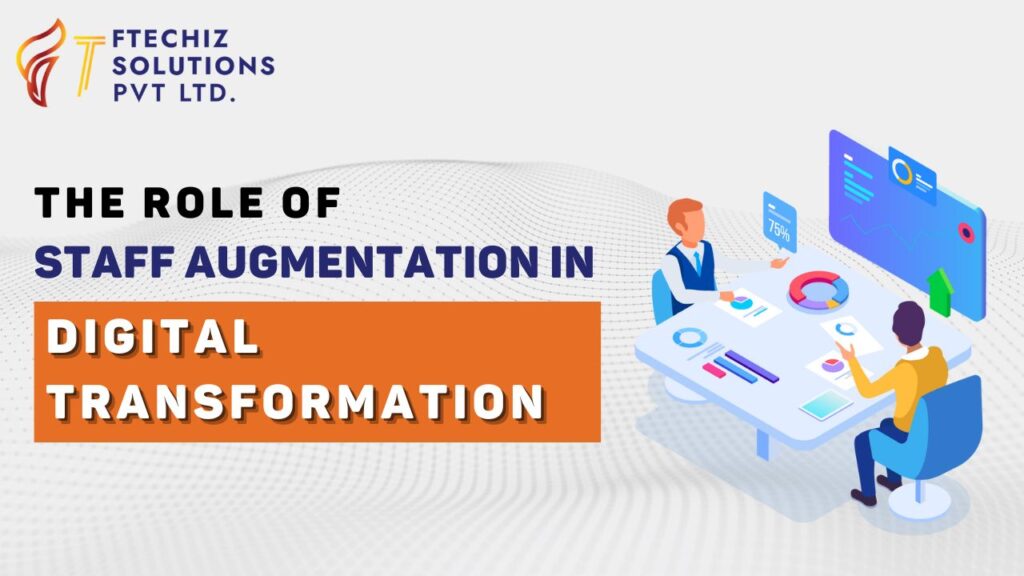
The Role of Staff Augmentation in Digital Transformation
“Digital transformation is no longer an option, it’s a necessity.” That’s a quote from Eric Shander. As businesses strive to stay competitive, they’re increasingly turning to digital solutions. But guess what? Many companies are finding they don’t have all the in-house talent they need to pull it off. This is where staff augmentation steps in, providing a much-needed boost to digital transformation efforts.
What is Staff Augmentation?
Alright, let’s break it down. Staff augmentation is when companies bring in external experts to fill gaps in their workforce. Instead of hiring permanent employees, they tap into a pool of skilled professionals on a temporary basis. These folks integrate seamlessly with the existing team, lending their expertise exactly where it’s needed.
Why Staff Augmentation Matters in Digital Transformation
In the digital age, change happens very fast. To keep up, businesses need to be agile, innovative, and ready to pivot at a moment’s notice. Digital transformation involves adopting new technologies, improving processes, and enhancing customer experiences. But all these fancy changes require specialized skills, which can be hard to come by internally.
Benefits of Staff Augmentation
- Access to Expertise: One of the biggest advantage of staff augmentation is access to a diverse talent pool. Need a blockchain developer or a cybersecurity expert? No problem. You can find the right person for the job without hunting for months.
- Cost-Effective: Hiring full-time employees can be expensive. Think salaries, benefits, and training costs. With staff augmentation, you only pay for the skills you need, when you need them.
- Flexibility: Business needs can change overnight. Staff augmentation lets you scale your team up or down based on project requirements. It’s like having a magic wand for your workforce.
- Fresh Perspectives: Sometimes, an outsider’s view can spark innovation. External experts bring new ideas and approaches that can drive your digital transformation forward.
Challenges and Solutions of Staff Augmentation
Now, let’s be real. Staff augmentation isn’t all sunshine and rainbows. There are challenges, but with the right approach, they can be managed effectively.
Challenge 1: Integration Issues
Bringing in external talent can sometimes lead to integration hiccups. New team members need time to get up to speed with the company’s culture, processes, and tools.
Solution: To smooth the transition, provide comprehensive onboarding. Introduce them to key stakeholders, explain the project goals, and offer training on company-specific tools. Regular check-ins can also help address any issues early on.
Challenge 2: Communication Barriers
Remote or temporary staff might face communication challenges, especially if they work from different time zones.
Solution: Establish clear communication channels and protocols. Use collaboration tools like Slack, Zoom, or Microsoft Teams to keep everyone connected. Scheduling regular meetings can ensure everyone is on the same page.
Challenge 3: Dependency Risks
Relying too heavily on external talent can create dependency risks. What happens if they leave before the project is completed?
Solution: Mitigate this risk by cross-training your internal team. Ensure that knowledge is shared, and key processes are documented. This way, your project can continue smoothly even if external staff members move on.
Future Trends in Staff Augmentation
Looking ahead, several trends are set to shape the future of staff augmentation in digital transformation.
- Increased Remote Work: The pandemic accelerated the shift to remote work, and it’s here to stay. Staff augmentation will increasingly leverage remote professionals from around the globe, broadening the talent pool even further.
- AI and Automation: Artificial intelligence and automation are revolutionizing the workplace. Staff augmentation will see a rise in demand for experts in AI, machine learning, and robotic process automation to drive digital transformation initiatives.
- Specialized Skill Sets: As technologies evolve, the demand for specialized skill sets will grow. Companies will seek experts in niche areas like quantum computing, blockchain, and augmented reality through staff augmentation.
- Blended Workforce Models: The future workforce will be a blend of full-time employees, augmented staff, freelancers, and gig workers. This hybrid model will offer unparalleled flexibility and agility.
Conclusion
To wrap things up, staff augmentation is a game-changer in the world of digital transformation. It provides the expertise, flexibility, and cost-effectiveness that businesses need to thrive in the digital age. By embracing this approach, companies can navigate the complexities of digital transformation with confidence and agility.
So, next time you’re facing a skills gap, consider staff augmentation. It might just be the boost your digital transformation journey needs. And remember, in the fast-paced digital landscape, staying ahead means staying adaptable. Embrace the change, leverage the talent, and watch your business grow.
Related Post
Best Practices for Implementing Staff Augmentation
The Impact of AI in Staff Augmentation
Benefits of Hiring a Remote Web Developer Through IT Staff Augmentation


